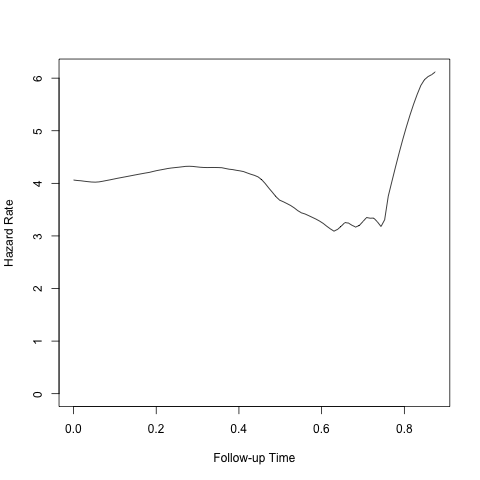When you censor by simply choosing to randomly change the censoring variable, you are essentially leaving in all of the case-"times" under observation until just before they would have died during a complete observation model. (That is an egregious violation of the non-informative censoring assumption needed for survival analysis.) You need to change this to a model where the censoring process shortens time to a sensible (random) number for the censored cases.
censRand <- function(time, cens.t.5){ # cens.t.5 is the t 1/2 of censor process
ctime <- rexp(n = length(time), rate = 1/cens.t.5)
event <- (time <= ctime)
t_obs <- pmin(time, ctime)
return(data.frame(Times=t_obs, event=event))
}
time=rexp(1000, 4)
ctime <- censRand( time, 0.7)
plot( muhaz( ctime[ ,1], ctime[,2]) )

To get a further notion of the range of time over which this might be a "stable" estimate (if it were not already apparent from the excursions around the simulated parameter) you can run it multiple times:
png()
plot( muhaz( ctime[ ,1], ctime[,2]) );
for (i in 1:20) { time=rexp(1000, 4)
ctime <- censRand( time, 0.7)
lines( muhaz( ctime[ ,1], ctime[,2]) ) };
dev.off()

